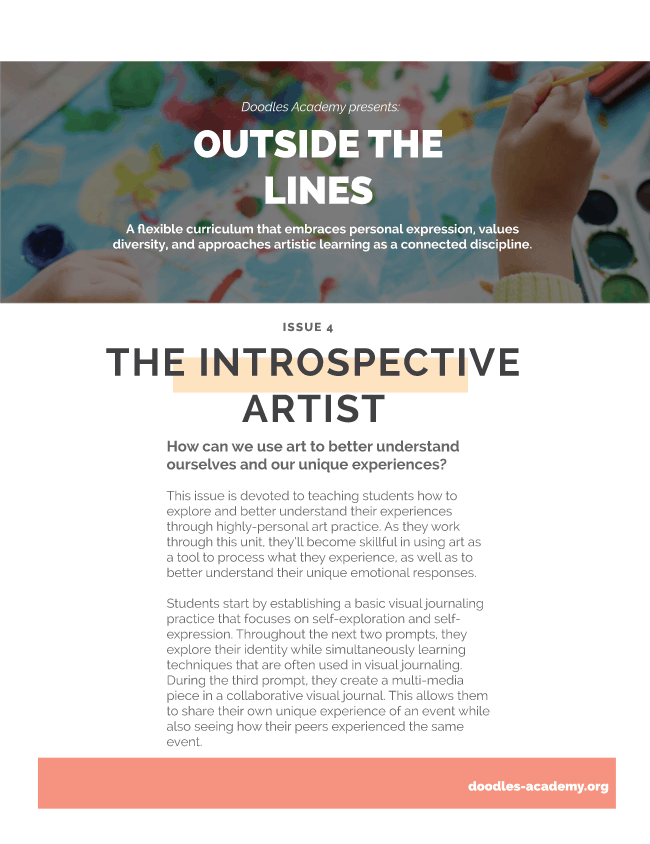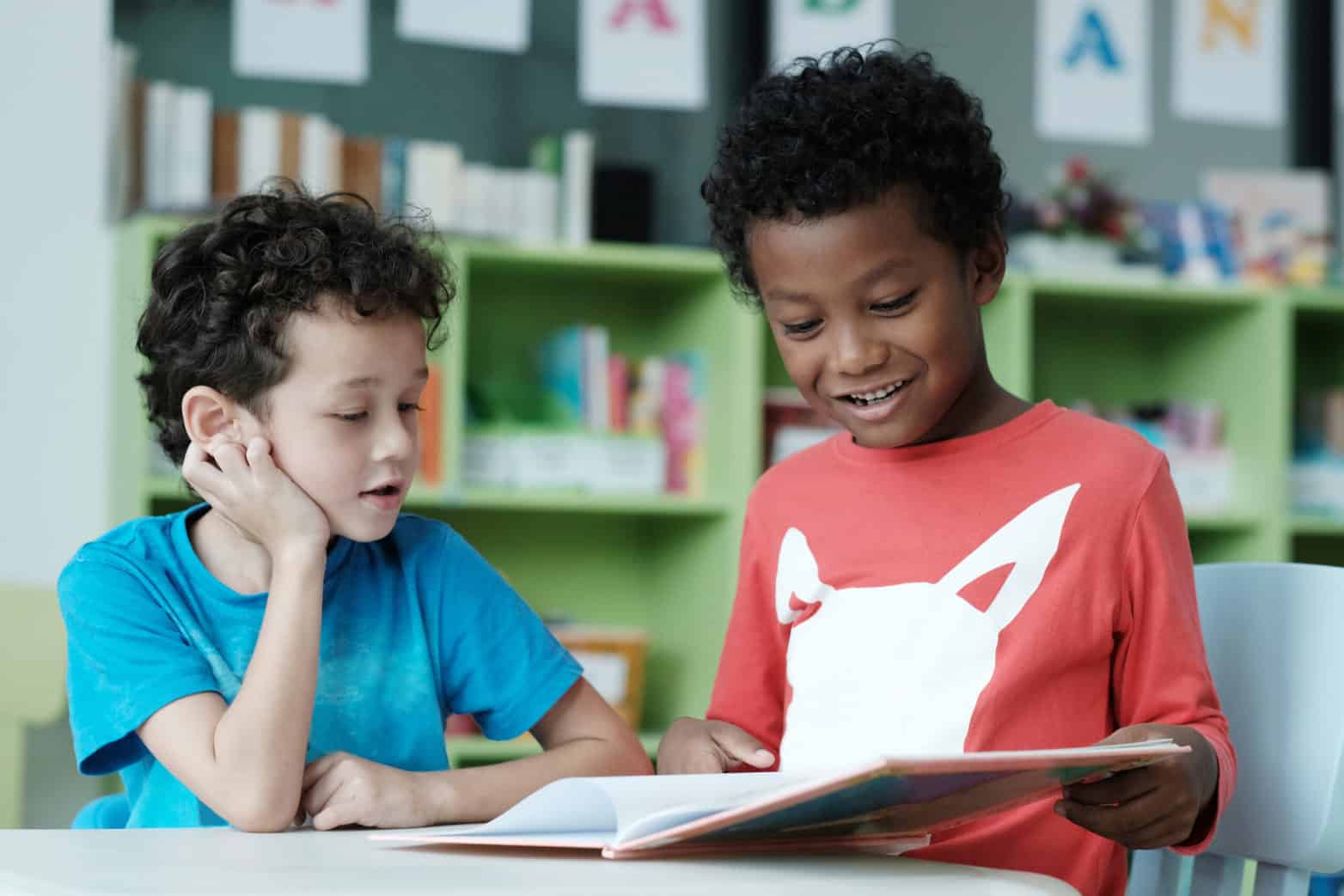The events of the last year have laid bare deep inequities. The return of the school year, therefore, brings us the unique opportunity to address these inequities, and to ensure that we provide students with a more complete and more honest compendium of resources—a set of tools that will foster resilience in a world that is often defined by disagreement.
This means revisiting our curricula and considering not just their academic merits, but also the opportunities they offer for students to explore their identities, to explore the identities of others, to grow empathy, and to consider the multitude of perspectives that scaffold any historical moment.
Art is an often overlooked tool for this work; art education can stimulate student interest and enrich the broader curriculum when it’s integrated with that curriculum rather than taught in a silo. As a classroom teacher incorporating art into the broader curriculum, your relationship with your students will be enriched as you’ll gain deeper insight into their personal, familial, and cultural identities.
How art supports learning outcomes
In 2019, Natalie Wexler released a book called The Knowledge Gap, in which she argues that low student test scores result from a mistaken emphasis at the elementary level on context-free reading skills (e.g., identifying a “passage”) and strategies rather than content-rich curricula that give students “a body of knowledge about the world.”
An increasing body of evidence points to the critical nature of building knowledge in students. For example, in one particularly well-known study, dubbed “The Baseball Study”, researchers Recht and Leslie had students read about baseball. Students who were at lower reading levels but possessed sufficient prior knowledge of baseball performed similarly to students at higher reading levels. Similar studies have bolstered the idea that knowledge, not isolated strategies, drives comprehension.
What this boils down to is that in order to build student knowledge, it is critical that teachers offer students a wealth of opportunities to learn about and connect to a given topic—this includes fiction, as well as non-fiction texts that connect to social studies and history, science, and the arts.
Putting it into practice
For any topic you are teaching in your classroom, there is a wealth of artists who have created artworks that can be connected, and this is an easy and engaging starting point. Here are a few steps you can take:
- Find and select at least two, preferably more, connected artworks.
- As you select artworks, choose works that move beyond a traditional canon and instead reflect a variety of cultures and experiences.
- Then, engage students in a discussion, ideally allowing at least 20 minutes for students to explore their thoughts on the artworks selected.
Begin by having students look at the work and note what they see within the view frame. Collect their observations neutrally. Then, engage your students in authentic discussion, rather than giving a lecture, asking students to gather visual evidence and interrogate it, and present it to their peers for discussion. This practice builds speaking, listening, and collaboration skills, as well as developing visual literacy.
Because students are engaged in these conversations around numerous examples of artworks that address a similar topic or theme, this first allows them to internalize the idea that there is no single way to approach an idea.
By carefully choosing artworks that move beyond a traditional canon and instead reflect a variety of cultures and experiences, students begin to form their own identities and see the identities of others as more fully formed.
Going one step further and incorporating actual art projects into the classroom can feel daunting, but it doesn’t need to. When using art as a tool for learning, your role is not to model a final artwork, but rather, to do what you already do every day in the subject area that you teach: guide students in understanding and exploring larger learning outcomes and how they can be connected to the students’ experiences.
The creative prompt that you offer your students should connect to the topic you are studying in your classroom, and should give students the room and opportunity to consider the topic in a way that is personally significant to them. There are many resources available to help you develop connected art prompts (if you want a starting point, we keep a list on the Doodles Academy website). Before making your choice, ask yourself, “Can I envision exactly what my student’s artwork will look like?” If the answer is yes, the prompt is likely too specific and doesn’t leave enough room for student inquiry and choice.
If you don’t feel comfortable teaching a multi-day art project, keep it simple: give students a prompt and allow them time to work through the prompt in a personal visual journal. A visual journal is just like a regular journal, but with more options. In it, students can write, draw, or combine the two to represent their ideas. In our fourth issue (see below), we have detailed instructions on how to set up visual journaling, and we also include some visual journaling prompts and other resources to get you started.
Before you start an art project with your students, take a moment to align your expectations and intentions. You are not teaching or measuring a concrete artistic skill but rather encouraging students to think through an idea or prompt creatively, to problem-solve, to develop the ability to clearly articulate an idea, and to show resilience in the face of set-backs. You are looking for opportunities to make student learning visible; you are not looking for “talented” students or “pretty” and “beautiful” works of art. The outcomes of open-ended prompts are a bit messy and a bit less polished than follow-the-teacher style drawings, but they can represent deep learning.
In short, focus on student inquiry and personal reflection as opposed to lecturing with concrete bits of information or demonstrating a specific art skill. You don’t need to be an artist to incorporate art into your classroom. By shifting your thinking and embracing art as a connection-making tool, you can provide students with valuable learning opportunities and extensions to the emotional, academic, and cultural work necessary for an inclusive classroom.


















